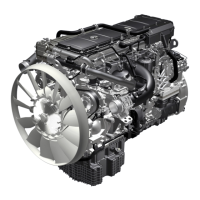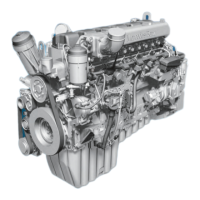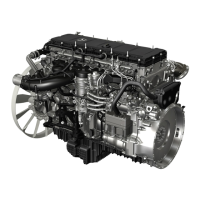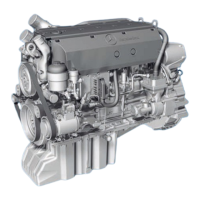Charging
24
Combustion
Introduction of New Generation of 4-Cylinder Inline Engines, OM 651
q
General
With engine 651, Mercedes-Benz has continued the
development of dual stage turbocharging in its
4-cylinder inline diesel engines
in a passenger car
(the predecessor with dual stage turbocharging is
engine 646
in the Mercedes-Benz Sprinter).
Design
The dual stage turbocharging system incorporates two
turbochargers that differ in size and a bypass control
system to achieve a high rated output and air mass
throughput even at low rpm. The boost pressure is
regulated via the boost pressure control flap (LRK),
the wastegate and the charge air bypass flap. The
control
operations take into account the respective
engine torque request based on performance maps.
Advantages of dual stage, controlled turbo-
charging
This complicated control system which uses two
turbochargers to feed charge air to the engine in
accordance with its requirements has the following
advantages:
• Noticeably more dynamic start-off behavior
• No start-off sluggishness (turbo lag)
• Well-balanced driving characteristics
• Noticeably better driving performance throughout
the entire rpm range
• Good acceleration (high torque at low rpm)
• High-pressure turbocharger is designed to build up
boost pressure rapidly at
low engine speeds
• Low-pressure turbocharger is designed to build up
high
boost pressure with high gas flow at medium
and high engine speeds
The effects on the engine include:
• Better cylinder charging and thus higher output
• Well-balanced torque curve at extremely high level
• Improved rated output with a well-balanced torque
curve
• Lower fuel consumption
• Long service life and high reliability
• Reduced nitrogen oxide (NO
x
) emissions
Function sequence of boost pressure control
For a better overview of how dual stage turbocharging
works, three different states of wide open throttle
operation have been selected. These states will be
used to explain and illustrate the exact process.
The following boost pressure control states are
described:
• Wide open throttle operation up to 1,200 rpm
• Wide open throttle operation between 1,200 and
2
,800 rpm
• Wide open throttle operation as of 2,800 rpm
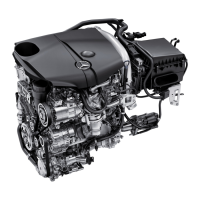
